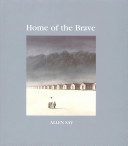
Following a kayaking accident, a man experiences the feelings of Japanese-American children interned during World War II and children on Indian reservations.
Take a closer look at Home of the Brave as examined in WOW Review.
Materials from the Americas

Following a kayaking accident, a man experiences the feelings of Japanese-American children interned during World War II and children on Indian reservations.
Take a closer look at Home of the Brave as examined in WOW Review.
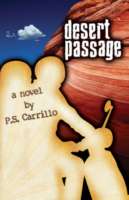
Miguel and Ramón are in big trouble with their family. The cousins were almost expelled from school for fighting, and just as they’re finishing up their final year in middle school and preparing to enter high school, their grades have dropped. Miguel’s father Rodrigo who, with his wife Connie, has raised Ramón since his father’s tragic death in a car accident has decided the boys need to be punished. So instead of going on the family’s summer vacation to Santa Fe, they’ll stay with their Abuelita Rosa in a remote town in northern Arizona and do chores around her place.Dreading a long, boring month with their grandmother in the middle of nowhere, the boys get started on the extensive list of tasks they are supposed to complete. Cleaning the shed seems like the least disagreeable one, and soon they find something interesting: a two-wheeled Vespa scooter covered with dust and cobwebs. Excited at their find, the boys decide fixing the scooter might enliven their stay. If they can get it to run, they’ll at least be able to get around town.The next morning, though, Miguel and Ramón wake to a quiet house, and they’re shocked to find their grandmother unconscious in her bed. When the ambulance takes her away to the hospital, the boys are left alone and unable to contact Miguel’s parents. Suddenly, the scooter seems to be the only answer to reaching their family, and so the boys gather food, water, sleeping bags, and the small amount of money they have and begin the long trip to New Mexico.Miguel and Ramón quickly learn that traveling across the country isn’t as easy as they had expected. Sharing the road with fast-moving eighteen-wheelers and camping in the cold desert all make for an exhausting trip. But along the way the boys see many wonderful sights including the Grand Canyon and the red rocks of Sedona and meet lots of interesting people: Frank, an old friend of their grandfather’s who helps them get the scooter ready for the trip; Turner, an attentive youth group counselor they meet at the Grand Canyon; and a group of scientists exploring an ancient Native American site. Most importantly, Miguel and Ramón will discover a lot about themselves through their growing independence as emergent young men.
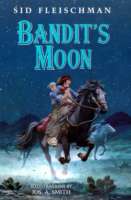
Newly orphaned, young Annyrose escapes from the villainous O.O. Mary and falls under the protection of a proud and fearless Mexican bandit, regarded as the Robin Hood of the California Gold Rush. Annyrose wants only to search for her older brother who had run off to the gold diggings, but she finds herself galloping beside the celebrated outlaw in his own quest. He is hunting down the last of a band of “Yankee” riffraff who wronged him, an event that turned the innocent young Mexican into an avenging terror of the roads. With his characteristic story twists and turns and surprises, Newbery Award winner Sid Fleischman lights up a dark corner in this Gold Rush drama set against a firestorm of bigotry ignited by the lust for riches. As for this legendary bandit, dashing about on his silken black horse and breathing fire, he actually lived.02 Rebecca Caudill Young Reader’s Book Award Nominee Master List, 00-01 Charlie May Simon Book Award Reading List, 02 Nutmeg State Children’s Book Award Masterlist, 00-01 Children’s Choice Award Masterlist, 00-01 William Allen White Children’s Book Award Masterlist, 01-02 Land of Enchantment Book Award Masterlist (Gr. 6-9), and 00-01 Sequoyah Children’s Book Award Masterlist.
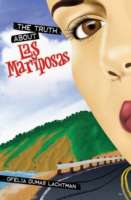
Sixteen-year-old Carolina “Caro” Torres is excited about spending six weeks of her summer vacation working for her Tía Matilde, mainly because she needs money to buy the car she has been eyeing. But her excitement turns to bewilderment when she finds her aunt hobbling around on a broken foot and, much to her surprise, the owner of a bed and breakfast called Las Mariposas. Almost immediately Caro meets two young people–Andy and Sara–who fill her in on the goings-on around town. For reasons no one understands, the mayor is trying to put her Tía Matilde out of business. His efforts have forced many of the townsfolk to stop doing business with her. A broken foot and a relentless antagonist are too much for Matilde, and she is ready to give up her home and her livelihood. But the three young people convince Matilde that they can help her run the B&B while she recovers. Busy with cleaning rooms, buying groceries, and cooking meals for their guests, Caro and her new friends still find time to wonder why the mayor is so determined to run her aunt out of business. When Caro finds a piece of a mysterious, old letter that makes reference to a fortune left to an unknown individual, the young people are sure there’s a connection to the mayor’s attempts to gain ownership of Las Mariposas. Who could have written the letter? What “bequest” is it talking about? Popular young adult author Ofelia Dumas Lachtman has once again crafted an entertaining and intriguing mystery novel for teen readers.
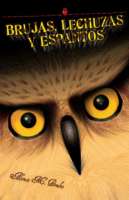
In this bilingual collection of five stories, Don Cecilio tells the neighborhood children stories that make their hair stand on end. \”In my barrio they told the story…\” and so his cuento would begin. In \”The Owl and the Bundle,\” young Tomas disappears without a trace. Distraught, his parents and siblings look for him everywhere with no luck. Upon returning home, his father sees something curious, an owl flying above the house carrying a bundle with its talons. \”Is it possible,\” he wonders, \”that the bundle is Little Tomas?\” Could the owl have taken their precious son? Based on oral tradition, these stories featuring witches, owls, and other spooky creatures have been told in Spanish-speaking barrios for generations. Now, this new edition with a first-ever English translation provided by John Pluecker will entertain and terrify a new generation of English- and Spanish-speaking children with the supernatural tales of the Hispanic community. Originally published in Spanish in 1972 as La Lechuza: Cuentos de mi barrio (The Naylor Company), Brujas, lechuzas y espantos / Witches, Owls and Spooks will fascinate children interested in scary stories and at the same time will provide a window into a different time and place, when people lived a more rural life and winged shadows flitted across the darkened countryside.
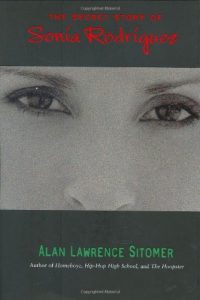 Sonia Rodriguez was born in the United States, but her parents are Mexican immigrants who came to California before she was born. Her father has three Social Security numbers, her mother is pregnant (again), and neither of them speaks English. Sonia’s mother spends most of her time in bed, watching soap operas, and letting Sonia clean up after her brothers. Sonia’s father works dutifully to support his family, but he knows that his daughter’s dreams are bigger than making tamales for family get-togethers. When Sonia attempts to put school work before her familia, her mother decides that it’s time for Sonia to visit her grandmother in Mexico to learn “the ways of the old world.” While in Mexico, Sonia spends time with her wise grandmother and her cousin Maria who teach her that while familia is important, the most important thing is to follow your heart. Sonia returns to the States determined to succeed in school, but the birth of her new twin siblings, inappropriate advances from her drunk uncle (Drunkle), and a forbidden relationship with an El Salvadorian boy push school to the back burner. If only Sonia can find the time to cook dinner, secretly meet with her boyfriend, avoid her Drunkle, AND finish her homework, she just might be able to graduate from high school…
Sonia Rodriguez was born in the United States, but her parents are Mexican immigrants who came to California before she was born. Her father has three Social Security numbers, her mother is pregnant (again), and neither of them speaks English. Sonia’s mother spends most of her time in bed, watching soap operas, and letting Sonia clean up after her brothers. Sonia’s father works dutifully to support his family, but he knows that his daughter’s dreams are bigger than making tamales for family get-togethers. When Sonia attempts to put school work before her familia, her mother decides that it’s time for Sonia to visit her grandmother in Mexico to learn “the ways of the old world.” While in Mexico, Sonia spends time with her wise grandmother and her cousin Maria who teach her that while familia is important, the most important thing is to follow your heart. Sonia returns to the States determined to succeed in school, but the birth of her new twin siblings, inappropriate advances from her drunk uncle (Drunkle), and a forbidden relationship with an El Salvadorian boy push school to the back burner. If only Sonia can find the time to cook dinner, secretly meet with her boyfriend, avoid her Drunkle, AND finish her homework, she just might be able to graduate from high school…
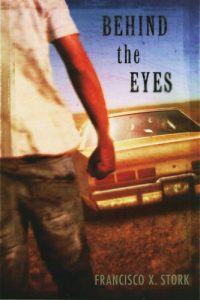 Hector Robles has spent his sixteen years in the projects of El Paso trying to stay unnoticed. His peaceful obscurity is shattered when his impulsive brother challenges the leader of a gang called the Discípulos. Suddenly Hector is drawn into their world of violence and hopelessness. When a marker is placed on his life, Hector tries to escape by going away to a school for students with troubled pasts. But it isn’t easy to function when he’s paralyzed by the fear that they’ll find him, even there. Ultimately, by confronting external threats and the internal pain of his memories and mistakes, Hector begins to understand what manhood really means.
Hector Robles has spent his sixteen years in the projects of El Paso trying to stay unnoticed. His peaceful obscurity is shattered when his impulsive brother challenges the leader of a gang called the Discípulos. Suddenly Hector is drawn into their world of violence and hopelessness. When a marker is placed on his life, Hector tries to escape by going away to a school for students with troubled pasts. But it isn’t easy to function when he’s paralyzed by the fear that they’ll find him, even there. Ultimately, by confronting external threats and the internal pain of his memories and mistakes, Hector begins to understand what manhood really means.
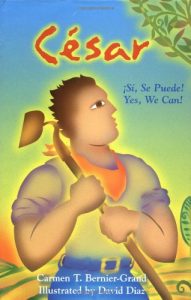 Born in 1927 in Yuma, Arizona, César Chavez lived the hard-scrabble life of a migrant worker during the depression. He grew to be a charismatic leader and founded the National Farm Workers Association, an organization that fought for basic rights for his fellow farm workers. In powerful poems and dramatic stylized illustrations, Carmen T. Bernier-Grand and David Díaz pay tribute to his life and legacy.
Born in 1927 in Yuma, Arizona, César Chavez lived the hard-scrabble life of a migrant worker during the depression. He grew to be a charismatic leader and founded the National Farm Workers Association, an organization that fought for basic rights for his fellow farm workers. In powerful poems and dramatic stylized illustrations, Carmen T. Bernier-Grand and David Díaz pay tribute to his life and legacy.